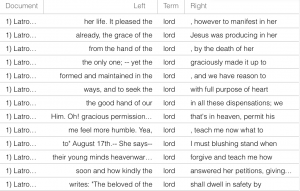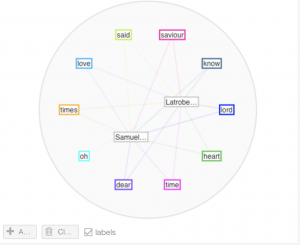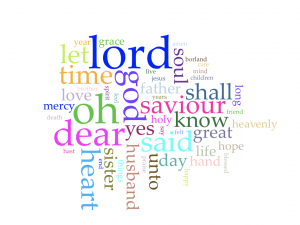Esther Latrobe was born in Bristol on June 7th, 1802. As a child, she faced many hardships with illness including the measles, but astonished doctors by persevering. At age 11 she lost her mom, and remained the only woman in her family along with her six brothers. She spent some of the best years of her life in Tytherton. She taught for a while at the Ladies Boarding School in Tytherton; after her teaching stint she became devoted to the lord and spread his teachings. She devoted her heart and soul to our saviour. She was also married and became the mother of a healthy boy. Shortly after giving birth she became severely ill and could not recover. She was not afraid of death and comforted her loved ones on her own death bed. She remained a happy spirit and had faith that she was joining the Lord. She was 28 when she passed away in the company of her husband, her baby boy, and other loved ones.

Our research question is: how did Esther Latrobe’s relationship with God affect her lifestyle, and help her recover from such illnesses and hardships? Our approach of using Voyant can help us look at the research question to a certain extent, but I don’t think it can help us completely answer it. We can use these “visualization tools as a component in a larger interpretative process” (Whitley 189). For example, using tools like contexts or collocates allows us to see the surrounding text around words like “saviour” or “lord”. This could help us get a sense of how Esther viewed God throughout her life. Also, using cirrus could help see the most frequently used words, which will show us if topics like God and Lord are important throughout the whole text. Tools like this are quicker and more direct than using more traditional humanistic means. However, in order to completely grasp how Esther’s hardships in life connected her with God I think it would be beneficial to look at the text through a closer reading. Like the Whitley reading points out, one way to analyze our text is to “step back and look at the broad patterns that emerge” (Whitley 188), but our research question might require looking at more detail. According to voyant, there are 8,460 total words and 1,793 total unique words in Esther Latrobe’s memoir. The most frequent words include “oh”, “lord”, “dear”, “god”, “let” and “saviour”. When looking at words like “lord” and “god” many of the collocates tend to be verbs suggesting that God plays an active role in Esther’s life.

There were patterns across all texts like themes of religion and faith in God. For example, looking at Samuel Tippett’s memoir there were similar frequently used words like “saviour”, “lord”, and “dear”. This shows that religion was a significant part of both of their lives. In contrast Tippett also focused on “time” and “love” whereas Latrobe seemed to devote more of her short life to her faith.

Using the tools Cirrus, trends, micro search, and bubble lines we can see certain patterns like the distribution of the words throughout the documents and the high frequency that these words appear. Platforms like voyant truly “make visualizations function as interfaces in an iterative process that allows [scholars] to explore and tinker.” (Whitley 190)
Jessica Hom is currently a sophomore at Bucknell University. At Bucknell, she plays on the varsity softball team and is currently undeclared. She is from Syosset, NY and is a graduate from Syosset High School.